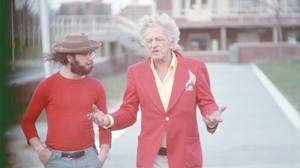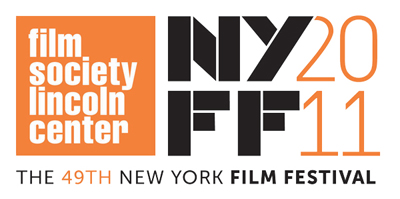
Directed by Nicholas Ray
Screenplay by Nicholas Ray
USA, 1976
After much commercial success in the 1950s with such great films as Rebel Without a Cause (James Dean, Natalie Wood, and Dennis Hopper) and Johnny Guitar (Joan Crawford and Mercedes McCambridge), Nicholas Ray increasingly became shut out of Hollywood in the late 1960s and 1970s due to his widely-panned sense of experimentation in such films as The Savage Innocents and his Jesus of Nazareth biopic King of Kings, along with an immense addiction to drugs and alcohol that left him hospitalized after collapsing on set of 55 Days at Peking, Ray didn’t reemerge back into film until the mid-1970s with a small student driven art film. That film, which would be his last before he succumbed to lung cancer in 1979, was We Can’t Go Home Again.
 To many, Ray’s sense of experimentation in film was always apparent. Within Rebel Without a Cause, one can notice an expressionistic use of color, unique style of architecture and stage sets, and an empathy for social misfits. Even in the 1940s, Ray’s take on “two young lovers running away from the law,” They Live by Night, pioneered a sub-genre labeled “love on the run” in later films like Gun Crazy, Bonnie and Clyde, Badlands, and Robert Altman’s 1974 remake of They Live By Night, Thieves Like Us. Youthful outcasts and rebellion has always been a recurring motif and staple within Ray’s filmography, and We Can’t Go Home Again might be his most extreme example of it. The film follows a group of SUNY Binghamton students in upstate New York, as they are documented while making a feature film in the 1970s. While widely known to be an unfinished project, the film aims to record the history and manners of everyday life in a critical moment in American history preoccupied with liberation, expressionism, and political tension.
To many, Ray’s sense of experimentation in film was always apparent. Within Rebel Without a Cause, one can notice an expressionistic use of color, unique style of architecture and stage sets, and an empathy for social misfits. Even in the 1940s, Ray’s take on “two young lovers running away from the law,” They Live by Night, pioneered a sub-genre labeled “love on the run” in later films like Gun Crazy, Bonnie and Clyde, Badlands, and Robert Altman’s 1974 remake of They Live By Night, Thieves Like Us. Youthful outcasts and rebellion has always been a recurring motif and staple within Ray’s filmography, and We Can’t Go Home Again might be his most extreme example of it. The film follows a group of SUNY Binghamton students in upstate New York, as they are documented while making a feature film in the 1970s. While widely known to be an unfinished project, the film aims to record the history and manners of everyday life in a critical moment in American history preoccupied with liberation, expressionism, and political tension.
One certainly cannot contest to the nodes of expressionism and liberation of this youth culture, but viewers may be weary as to what construes as elements of everyday life. Nothing in this film screams everyday, typical, or normal. Saturation of color and noise scatter onto small boxes projected onto screen. Random insertions of nudity and violence interject footage of personal asides. Even the mere fact that a group of misfits are nestled alone together in the countryside as a plot device completely defies any expectation of everyday living. What the film represents, and represents well, is an emotional outcry during a time that a misfit youth culture could rebel and rein free. It’s a reflection that embodies the spirit of the time. Liberation is portrayed by sex, confusion (whether it be from politics or war) through chaotic audio and visual cues. To say it’s anything more than a documentation of emotion within an uncertain era is giving the film more credit than it deserves.
The objectivity of the film raises good question to whether or not the fact that a film is coined “experimental,” makes it an artistic form worth merit of being great. Too many times a film is perceived as passable just because it doesn’t follow conventional filmic means. Quoted as being “a visionary a good 40 or 50 years ahead of his time” and “a film whose time has finally come,” the marvel isn’t quite what is expected of Ray. What makes experimentation visionary is not necessarily the use of vibrant visuals and multiple projector imagery, but how new techniques connect with an audience. Unfortunately for We Can’t Go Home Again, empathy is not sustained and Ray’s methods do not hold up with current times. Any praise that comes from the film is a product of the life of its notable director and not of the film itself. Although not a timeless flick, We Can’t Go Home Again should be respected as a calling of its present time. Emotions run deep among characters and visuals during a time of chaos, and that alone is a feat for its time.
We Can’t Go Home Again will be screening it’s newly restored version released by Oscilloscope at the New York Film Festival on October 2nd . Visit the official website for the New York Film Festival


